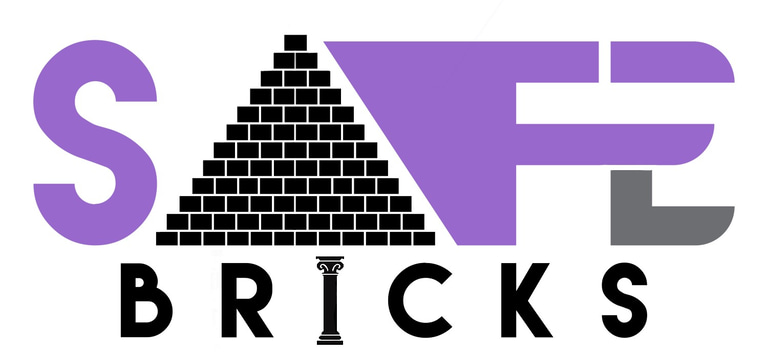How to Get a Perfect Plaster Finish in a Brighton Loft Conversion
What Every Homeowner Needs to Know Before the Skim Coat Goes On
A loft conversion is one of the best ways to add space, light, and value to your home—but one of the most overlooked (yet absolutely crucial) parts of the process is the plastering. While it’s tempting to see plaster as just the final coat before decorating, it plays a huge role in both the appearance and performance of your new loft.
At Safe‑Bricks Limited, we’ve perfected the art of Brighton & Hove loft conversion plastering, from tricky dormer angles to awkward steel beams and staircase openings. This guide will show you exactly what’s involved in achieving a flawless finish—and how to avoid common mistakes that can ruin the look of your investment.
Why Loft Conversion Plastering Is Different
Loft spaces are challenging. Unlike regular rooms, lofts often include:
Dormer windows and sloped ceilings
Newly installed steels and padstones
Velux rooflight reveals
Staircase openings cut into old joist systems
Mixes of new and old surfaces that expand at different rates
These details demand absolute precision in boarding and plastering. A poor plaster job can leave visible waves on ceilings, bulging corners, or cracked reveals that ruin even the best design.
5 Key Areas Where Plastering Must Be Spot-On
1. Dormers & Angled Ceilings
Dormer windows are a common feature in Brighton loft conversions, but they create complex internal junctions that require experienced hands. Clean corners and flush planes are vital for light reflection and a premium visual finish.
Safe-Bricks tip: We pre-cut all boards to ensure tight junctions before skimming, ensuring crisp lines without lumpy joins.
2. Around Steel Beams
Most lofts need steel beams to support new loads. Plastering around them requires:
Boxing them with correct clearance
Plasterboard fixing without direct contact to avoid cracking
Seamless joins where steel boxes meet ceilings and walls
Common mistake to avoid: Skimming directly onto beam boxing without proper scrim tape and joint compound = cracks every time.
3. Velux Window Reveals
Velux openings are a stunning feature—but also one of the easiest areas to get wrong. Sharp angles, deep reveals, and corners that flex with temperature make this a real test of a plasterer’s skill.
We use flexible corner bead and breathable skim coats to minimise cracking and deliver picture-perfect finishes.
4. New vs Old Surfaces
Loft conversions usually involve new stud walls and old brick or lathe walls below. These expand and contract at different rates, which can lead to hairline cracks where new plaster meets old materials.
We bridge these surfaces properly with mesh, bonding coats, and by managing moisture levels during curing.
5. Staircase Bulkheads & Cut-Outs
The new staircase opening is often cut through an old ceiling—and plastering around it is more than just cosmetic. It ties together structural changes, fireproofing, and the aesthetics of two floors.
We coordinate closely with joiners to plaster right up to the new stair strings, nosings, and soffits—creating that seamless “new build” look.
Why You Shouldn’t Leave This to a General Builder
We’ve seen too many beautiful lofts spoiled by rushed, sloppy, or simply inexperienced plastering. Loft conversions need someone who:
Understands thermal and movement differentials
Can plaster cleanly around steels, roof angles, and staircases
Works neatly to prevent delays for decorators or floor installers
We’re not just a Brighton & Hove plastering company—we’re loft conversion specialists who know how important timing, coordination, and technical finish are in these projects.
What to Expect When You Hire Safe‑Bricks
When you book us for your loft plastering, here’s what we bring to the job:
✅ Pre-boarding prep: We liaise with your main contractor to inspect surfaces, ensure framing is true, and check all mechanical work is finished before we touch a board.
✅ Boarding & Beading: High-spec boards installed with tight tolerances, angle beads on every external corner, and full scrim taping to prevent cracks.
✅ Skimming: Smooth, polished plastering using multi-coat methods for superior adhesion and long-term durability.
✅ Clean transitions: Perfect alignment between old and new ceilings, walls, and trims.
✅ Protection & prep: We treat your loft like a showhome, with dust sheets, clean work areas, and daily tidy-downs.
Bonus: What Can Go Wrong (If You Don’t Hire Specialists)
❌ Visible tapelines or lumpy corners around dormers
❌ Hairline cracks where steels weren’t prepped right
❌ Uneven ceiling planes or sloping finishes
❌ Delays to decorating or snagging due to poor prep
❌ Long-term issues like mould or damp if breathability isn’t managed
Final Word: Finish Strong
The plastering stage is your last chance to make your loft look perfect before the paint goes on. It’s also one of the most affordable upgrades to get right—so don’t cut corners.
A premium finish means:
Brighter light reflection
Easier decorating
Better resale value
Zero regrets when you look at it every day
Ready to Get Your Loft Finish Right?
If you're planning a loft conversion in Brighton and Hove and want flawless plastering around dormers, steels, and staircases, we’d love to help.
Safe-Bricks Limited © 2025. All rights reserved.




